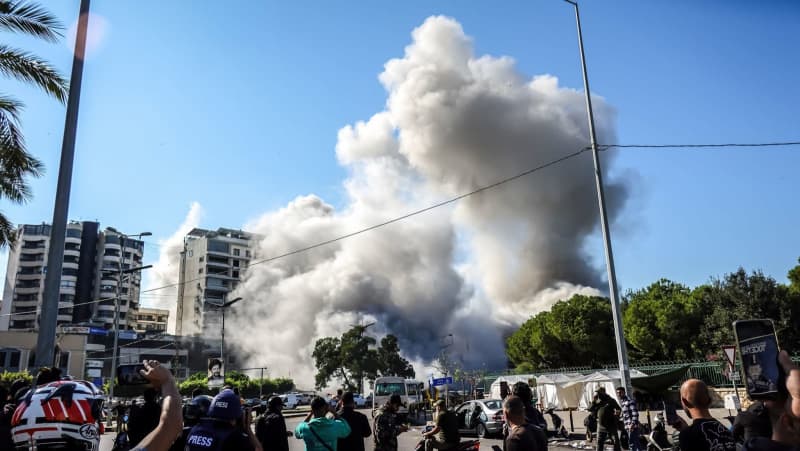In a significant escalation of hostilities, the Israeli military has launched air strikes against over 120 Hezbollah targets in Lebanon within a mere 24-hour timeframe, intensifying its military campaign against the Iran-backed militant group. The Israeli military has publicly stated these strikes are directed at key assets, such as weapons depots and rocket launchers, which have been implicated in firing projectiles into Israel. This announcement has highlighted ongoing ground operations in southern Lebanon and reflects Israel’s strategic objective to neutralize threats posed by Hezbollah. The military’s actions come in tandem with accusations directed at Hezbollah of deliberately taking control of civilian areas, which has raised alarms about the potential for increased civilian casualties amid the conflict.
Reports emerging from Lebanon indicate that new Israeli airstrikes have struck the southern suburbs of Beirut, areas recognized as Hezbollah strongholds. The Israeli military has proactively advised residents in specific buildings to evacuate due to the anticipated danger. In the midst of these operations, it was also disclosed that projectiles continue to be directed at northern Israel from Lebanon, resulting in injuries to several individuals, including foreign nationals, as reported by Israel’s Magen David Adom rescue service. This ongoing exchange underlines the multi-faceted nature of the conflict, impacting both military personnel and civilians alike.
The wider conflict, which reignited on October 8, 2022, followed a series of rocket attacks initiated by Hezbollah in a show of solidarity with Hamas, who had earlier instigated a war in Gaza through unprecedented assaults on Israel. Since that time, heavy clashes have dominated the border region, exacerbating tensions and leading to significant loss of life. The Lebanese Ministry of Health reports a grim toll, indicating that over 3,000 individuals have lost their lives in Lebanon due to the ongoing hostilities. These figures reflect not just combat-related fatalities, but also the broader humanitarian impact of the conflict.
The humanitarian situation in Lebanon remains dire, with an alarming number of civilian displacements occurring as a direct result of the relentless assaults. The United Nations has estimated that more than 800,000 people have been displaced within Lebanon due to the escalating violence. This crisis is compounded by the existing socioeconomic challenges, as Lebanon is already home to approximately 1.2 million Syrian refugees, who fled their own civil war and are now further affected by the new wave of conflict. The overlap of these crises poses significant challenges for the state and its ability to address the needs of both its citizens and refugees.
Additionally, Israel’s military operations highlight a strategic shift in their engagement with Hezbollah, reflecting an urgent need to dismantle the group’s operational capabilities. The Israeli military’s operations are being framed within a broader context of national security, as they seek to prevent further projectiles from entering Israeli territory. However, the dynamics of urban warfare mean that civilian areas are often caught in the crossfire, raising concerns from humanitarian organizations regarding the proportionality and legality of such military actions.
As the situation evolves, both Israel and Hezbollah continue to remain locked in a cycle of retaliation, with each side enduring significant losses. The implications of these hostilities extend beyond immediate military objectives, as they entrench divisions within the region and pose long-term challenges for peace and stability. The situation remains fluid, with ongoing developments indicating that both sides are preparing for further confrontations, which could lead to an even more catastrophic humanitarian situation. The international community is being called upon to engage and explore avenues for de-escalation to prevent further deterioration of the already compromised humanitarian landscape in Lebanon and neighboring regions.

